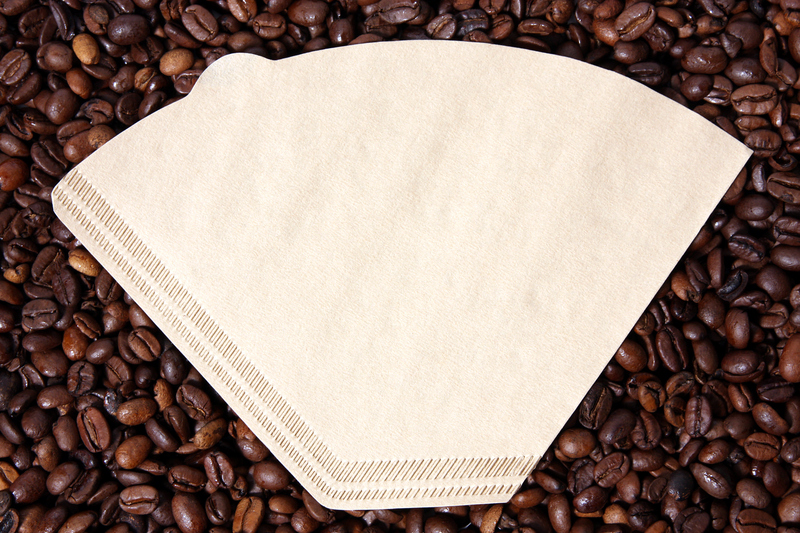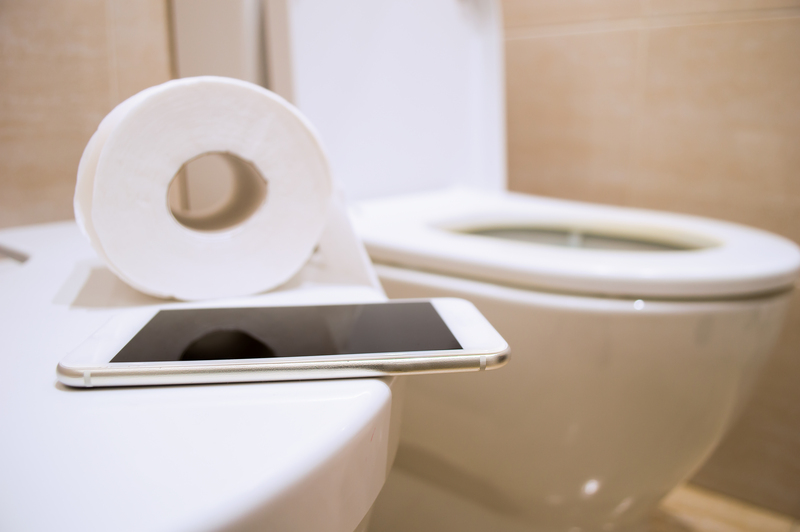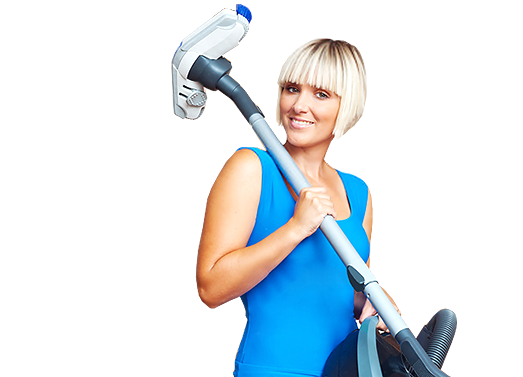Say goodbye to dust and allergens with these simple home care tips
Posted on 02/06/2025
Say Goodbye to Dust and Allergens with These Simple Home Care Tips
Are you constantly battling dust and sneezing from allergies at home? Maintaining a clean, allergen-free environment can feel overwhelming, but it doesn't have to be. A few strategic changes and effective cleaning habits can drastically improve your indoor air quality and significantly reduce allergen levels. From tackling dust mites to managing pet dander, this comprehensive guide will empower you to create a healthier, more welcoming living space.
Understanding Indoor Allergens and Dust
Before we dive into the solutions, it's important to understand exactly what causes indoor allergies. Dust and allergens are often invisible culprits that can cause sneezing, coughing, itchy eyes and even long-term respiratory problems. Common sources include:
- Dust mites
- Pollen
- Pet dander
- Mold spores
- Cockroach droppings
Over time, these particles accumulate in your home's fabric surfaces, affecting air quality and overall comfort. Eliminating dust and reducing allergens doesn't just lead to a cleaner home--it also promotes better health for your family.

Essential Home Care Tips to Minimize Dust and Allergens
1. Establish a Consistent Cleaning Routine
Regular cleaning is the cornerstone of allergen control. Whether you live alone or have a bustling household, try these cleaning tips:
- Dust surfaces with a damp microfiber cloth instead of a dry duster, which can send particles airborne.
- Vacuum high-traffic areas two to three times a week using a vacuum with a HEPA filter. This tackles both dust and trapped allergens.
- Wash bedding and curtains in hot water weekly to kill dust mites and remove accumulated particles.
- Declutter regularly--the fewer surfaces you have, the less dust there is to settle.
Tip: Always start cleaning from the top down, so dust falls to the floor and gets picked up during vacuuming.
2. Control Humidity for Dust Mite and Mold Prevention
Did you know that dust mites and mold thrive in humid environments? Keeping indoor humidity--ideally, between 30% and 50%--can drastically limit their growth. Consider these ideas:
- Use a dehumidifier in damp rooms such as the basement or bathroom.
- Fix leaks quickly to prevent mold-friendly environments.
- Ventilate rooms after showering or cooking.
- Check and clean HVAC drip pans and drains regularly to prevent mold.
3. Upgrade Your Air Filtration Systems
High-quality air filters are a critical defense line in removing dust and allergens from the air. If your home has central heating and cooling, use the following tips:
- Replace HVAC air filters every 1-3 months with HEPA or allergen-rated filters.
- Consider using portable HEPA air purifiers in bedrooms and living spaces.
- Keep windows closed during high pollen seasons and use air conditioning to filter air instead.
Upgrading your home's air filtration system may seem like a big step, but it's one of the most effective ways to say goodbye to indoor dust and allergens for good.
4. Manage Pet Dander Like a Pro
If you share your home with furry companions, pet dander becomes a leading source of indoor allergens. Don't worry! You don't have to give up your beloved pets. Help minimize their impact with these practices:
- Bathe and groom pets regularly to reduce dander and excess licking or scratching.
- Designate pet-free zones such as bedrooms for a cleaner, allergy-friendly retreat.
- Wash pet bedding and toys routinely in hot water.
- Use a vacuum with a HEPA filter designed for homes with pets.
5. Reduce Allergens in Your Bedding and Upholstery
Textiles--especially bedding, couches, and curtains--are magnets for dust mites and other irritants:
- Choose washable covers for pillows and mattresses, and clean them frequently.
- Opt for synthetic pillows rather than feather ones, as they're less inviting for dust mites.
- Steam cleaning sofas and carpets every few months helps kill mites and loosens embedded dust.
- Replace old bedding and pillows as they accumulate allergens over time.
Did you know? Encase box springs, mattresses, and pillows in allergen-blocking covers to create a lasting barrier against mites and dust.
Dust-Proofing Tips for Every Room
Living Room & Bedrooms
- Minimize fabric surfaces--choose leather or vinyl over fabric upholstery where possible.
- Keep windows closed during high pollen seasons and clean sills regularly.
- Use blinds instead of heavy drapes or wash curtains monthly.
- Wipe electronic screens and behind units to remove static-attracting dust.
Kitchen & Bathrooms
- Ventilate cooking and showering areas to prevent excess moisture and mold.
- Clean behind appliances--these hidden spots accumulate grease and dust quickly.
- Use smooth-surfaced cabinetry for easier cleaning.
- Empty trash bins frequently to prevent mold and cockroach allergens.
Floors & Carpeting
- Choose hard flooring (like wood, tile, or vinyl) over carpet in areas prone to dust, if possible.
- Vacuum carpets and rugs with a HEPA filter vacuum at least twice a week.
- Shampoo area rugs and carpets every few months to deep-clean allergens.
- Use washable, flat-weave rugs for easier maintenance.
Common Mistakes That Make Dust and Allergies Worse
Even the cleanest homes can have recurring allergy issues if certain habits go unchecked. Avoid these common pitfalls:
- Using feather dusters that scatter rather than trap dust.
- Neglecting forced-air system maintenance or changing filters too infrequently.
- Overusing scented cleaning products, which can irritate sensitive lungs.
- Letting clutter pile up, increasing surfaces for dust accumulation.
- Allowing indoor smoking, which dramatically worsens air quality and allergen buildup.
Natural and Safe Dust-Reduction Methods
Prefer eco-friendly, low-toxicity cleaning solutions? These natural options can help eliminate dust and indoor allergens while minimizing exposure to harsh chemicals:
- Use white vinegar and water for streak-free glass and hard surface cleaning.
- Try baking soda shakes on carpets before vacuuming to freshen and loosen dust.
- Opt for hypoallergenic, fragrance-free detergents especially when washing bedding.
- Houseplants like spider plants, snake plants, or peace lilies can help purify indoor air, but remember some may collect dust and need regular wiping!
Additional Tips for Long-Term Dust and Allergen Control
- Leave shoes at the door to prevent outside dust, pollen, and dirt from entering your home.
- Install matting at entrances for added dirt-trapping effectiveness.
- Keep pets brushed and clean outdoors if possible, and trim their fur.
- Check for hidden mold in HVAC systems, window sills, and behind wallpaper or tiles.
- Monitor pollen counts and keep windows closed on high days.
- Encourage family members and guests to use allergy-friendly practices for maximum results.

Frequently Asked Questions: Allergen and Dust Elimination
What is the best way to reduce dust in the home?
Regular cleaning with a damp microfiber cloth, vacuuming with a HEPA filter, and decluttering are among the most effective ways to reduce household dust.
How can I make my bedroom allergy-proof?
Wash bedding in hot water weekly, encase pillows and mattresses in allergen-proof covers, and minimize excess decor that can collect dust. Keep pets out for a true allergy-friendly sanctuary.
Are air purifiers really effective against allergens?
Yes! HEPA-filter air purifiers can capture up to 99.97% of airborne particles as small as 0.3 microns--including dust, pollen, and pet dander--dramatically boosting air quality.
How often should I replace air filters?
Replace HVAC air filters every 1-3 months, or more often if you have pets or severe allergies, to ensure optimal performance in eliminating indoor allergens.
Conclusion: Enjoy a Healthier, Cleaner Home Today
Keeping dust and allergens at bay doesn't have to be overwhelming. With these simple home care tips, you can say goodbye to dust and allergens and enjoy cleaner indoor air, fewer allergy symptoms, and an overall healthier home. Establish consistent cleaning routines, invest in quality air filters, and make smart swaps in bedding, cleaning products, and flooring. Whether you're fighting seasonal allergies or just want to breathe easier, implementing these strategies will make a noticeable difference.
Start small and build good habits for lasting results. Your eyes, lungs, and family will thank you!
Ready to breathe easier? Try these allergy-busting home care tips today!
If you found these tips helpful, share this guide with friends and family--let's all enjoy cleaner, healthier homes.





